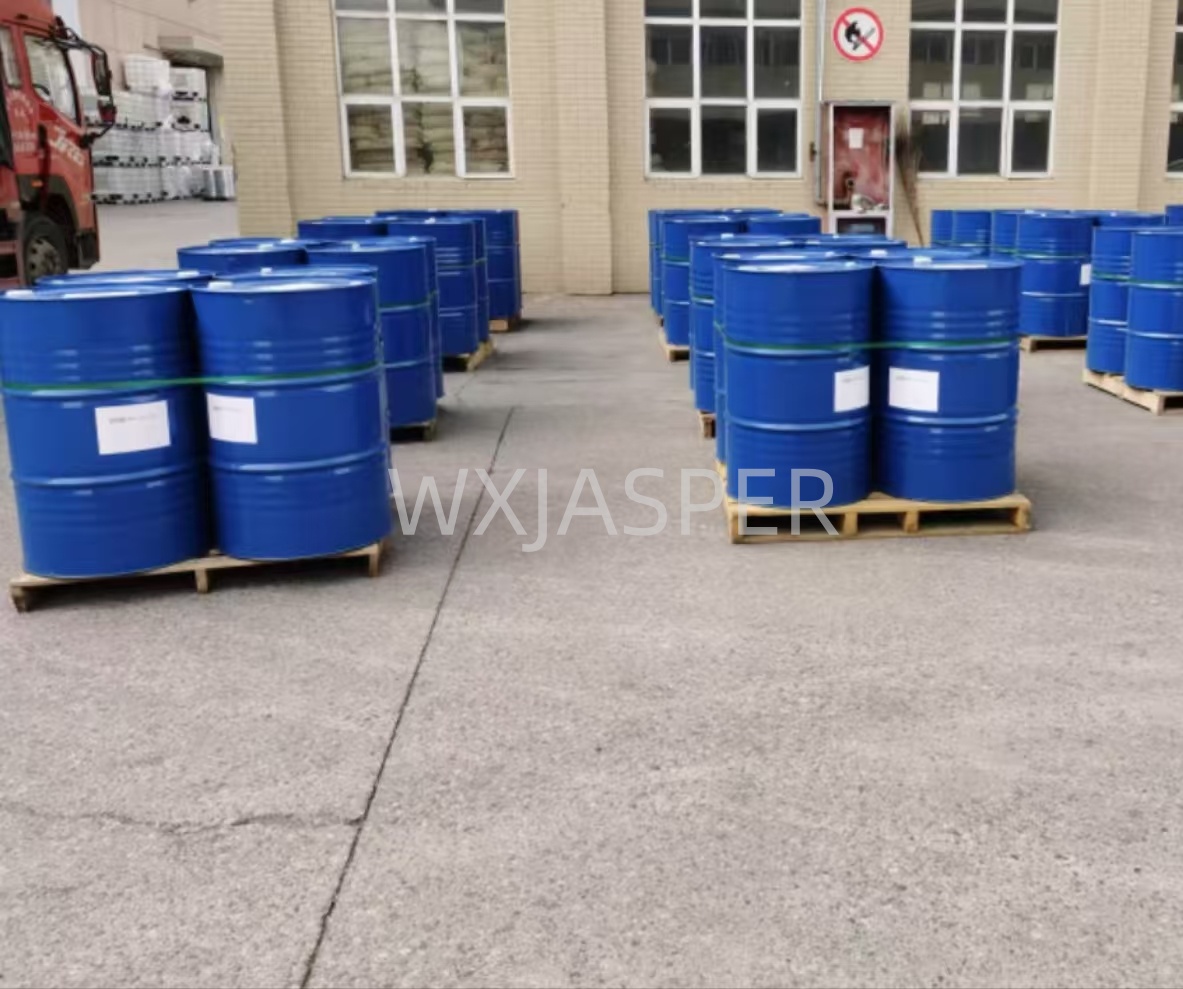Product Details
CasNo: 109-73-9
MF: C4H11N
Appearance: liquid
Delivery Time: 15 days
Packing: 200kg/drum
Purity: 99%
1. Basic Information
- Chinese Name: 一正丁胺 (n-Butylamine)
- English Name: n-Butylamine (abbreviated as 1-Butanamine)
- CAS Number: 109-73-9
- Molecular Formula: C₄H₁₁N
- Molecular Weight: 73.14
- Appearance: Colorless, transparent, highly volatile liquid with a pungent ammonia-like odor.
2. Physicochemical Properties
- Melting Point: -49℃ (Low freezing point; remains liquid in most industrial and ambient temperature environments, no antifreeze measures required).
- Boiling Point: 78℃ (High volatility; evaporates rapidly at room temperature, increasing the risk of vapor accumulation—sealed storage is critical).
- Relative Density: 0.74 g/mL (at 25℃; less dense than water, so spilled liquid floats on water surfaces, requiring surface-focused leak control).
- Flash Point: -1℃ (Closed cup; classified as a "highly flammable liquid." Vapors can ignite upon contact with open flames, sparks, or static electricity, posing severe fire risks).
- Refractive Index: 1.401 (at 20℃; a stable physical property used to verify product purity in quality control).
- Vapor Pressure: 97.3 mmHg (at 25℃; High vapor pressure accelerates volatilization, necessitating well-ventilated storage and handling areas).
- Vapor Density: 2.5 (vs. air; Heavier than air, so vapors tend to settle in low-lying areas (e.g., pits, tank bottoms), increasing inhalation and fire hazards).
- Solubility: Miscible with water (forms homogeneous solutions); fully miscible with organic solvents such as ethanol and ether, facilitating its use as a reaction solvent.
- Stability: Chemically stable under normal conditions but highly flammable. It is incompatible with strong oxidizers (e.g., hydrogen peroxide, potassium permanganate), acids (e.g., sulfuric acid, hydrochloric acid), and aluminum (may react to generate flammable hydrogen gas), requiring strict separate storage.
3. Quality Indicators
Industrial-grade n-Butylamine typically meets the following purity standards to adapt to different application scenarios:
| Quality Indicator |
Specification (Industrial Grade) |
Description |
| n-Butylamine Purity |
≥98% (General Grade); ≥99.5% (High-Purity Grade) |
High-purity grades (≥99.5%) are used in pharmaceutical and precision chemical synthesis to avoid impurity-induced side reactions; general grades (≥98%) are suitable for general industrial additives. |
| Water Content |
≤0.3% (General Grade); ≤0.1% (High-Purity Grade) |
Controls moisture to prevent hydrolysis of amine groups and corrosion of metal equipment, especially critical for high-end applications. |
| Isomeric Impurities (e.g., sec-Butylamine, tert-Butylamine) |
≤1.0% (General Grade); ≤0.3% (High-Purity Grade) |
Isomers may interfere with reaction selectivity (e.g., in pesticide synthesis), so strict limits are imposed for high-demand scenarios. |
| Color (APHA) |
≤20 |
Lower color values indicate fewer oxidized impurities (e.g., amine oxides), ensuring better stability during storage. |
4. Applications
- Pharmaceutical Industry: A key intermediate for manufacturing anti-diabetic drugs and other pharmaceuticals. Its amine group participates in the synthesis of active pharmaceutical ingredients (APIs), regulating molecular polarity and biological activity.
- Pesticide Industry:
- Intermediate for the fungicide benomyl (effective against crop fungal diseases).
- Raw material for producing carbamate herbicides and insecticides, enhancing the pesticidal efficacy and environmental stability of end products.
- Dye Industry: Used as an analytical reagent, emulsifier, and dye intermediate. It modifies dye molecules to improve color fastness and solubility in textiles.
- Other Industrial Fields:
- Petrochemical Additives: Produces gasoline anti-gumming agents and antioxidants to extend fuel storage life and prevent engine deposits.
- Rubber & Polymer Industry: Serves as a rubber polymerization inhibitor and silicone elastomer curing agent, improving product performance and processing stability.
- Surfactants & Flotation Agents: Its fatty acid soaps act as flotation agents for non-ferrous metals (aiding mineral separation); also used as a developer in color photography.
5. Packaging, Transportation, and Storage
Packaging
- Small-Volume Packaging: Sealed glass bottles (12 kg per bottle) secured with outer wooden crates to prevent breakage during transport.
- Bulk Industrial Packaging: 150 kg steel drums (inner wall coated with anti-corrosion resin to avoid reaction between the amine and metal).
Transportation
- Classified as a hazardous chemical: Hazard Class 3 (Flammable Liquids), Packing Group II, with UN Number: UN 1125 3/PG 2.
- Prohibit mixed transport with strong oxidizers, acids, or aluminum materials. Avoid open flames, high temperatures, and static electricity during transport; use grounded equipment for loading/unloading.
Storage
- Store in a cool, well-ventilated warehouse with a temperature not exceeding 37℃. Keep containers tightly sealed to prevent volatilization and moisture absorption.
- Separate from oxidizers, acids, and aluminum products to avoid hazardous reactions. Install explosion-proof lighting and ventilation systems in the storage area.
6. Safety Information
Hazards
- Irritation: Liquid and vapor irritate the skin, eyes, and respiratory tract. Direct contact may cause chemical burns; inhalation of high concentrations can lead to dizziness, nausea, or respiratory distress.
- Fire & Explosion: Highly flammable; vapor-air mixtures are explosive. Static electricity or small sparks may trigger ignition.
Protective Measures
Wear chemical-resistant gloves (e.g., nitrile gloves), splash-proof goggles, and a gas mask (equipped with amine-specific filters) during handling. Ensure the workplace is well-ventilated; use local exhaust systems for high-concentration operations.
Emergency Handling
- Leakage: Evacuate personnel, isolate the area, and cut off ignition sources. Absorb spills with inert materials (e.g., sand, vermiculite) or neutralize with dilute acid (for small spills).
- Skin/Eye Contact: Flush the affected area with large amounts of flowing water for at least 15 minutes; seek medical attention immediately if burns occur.
- Fire: Use dry chemical extinguishers or carbon dioxide extinguishers; avoid water jets (may spread flammable liquid and vapor).


